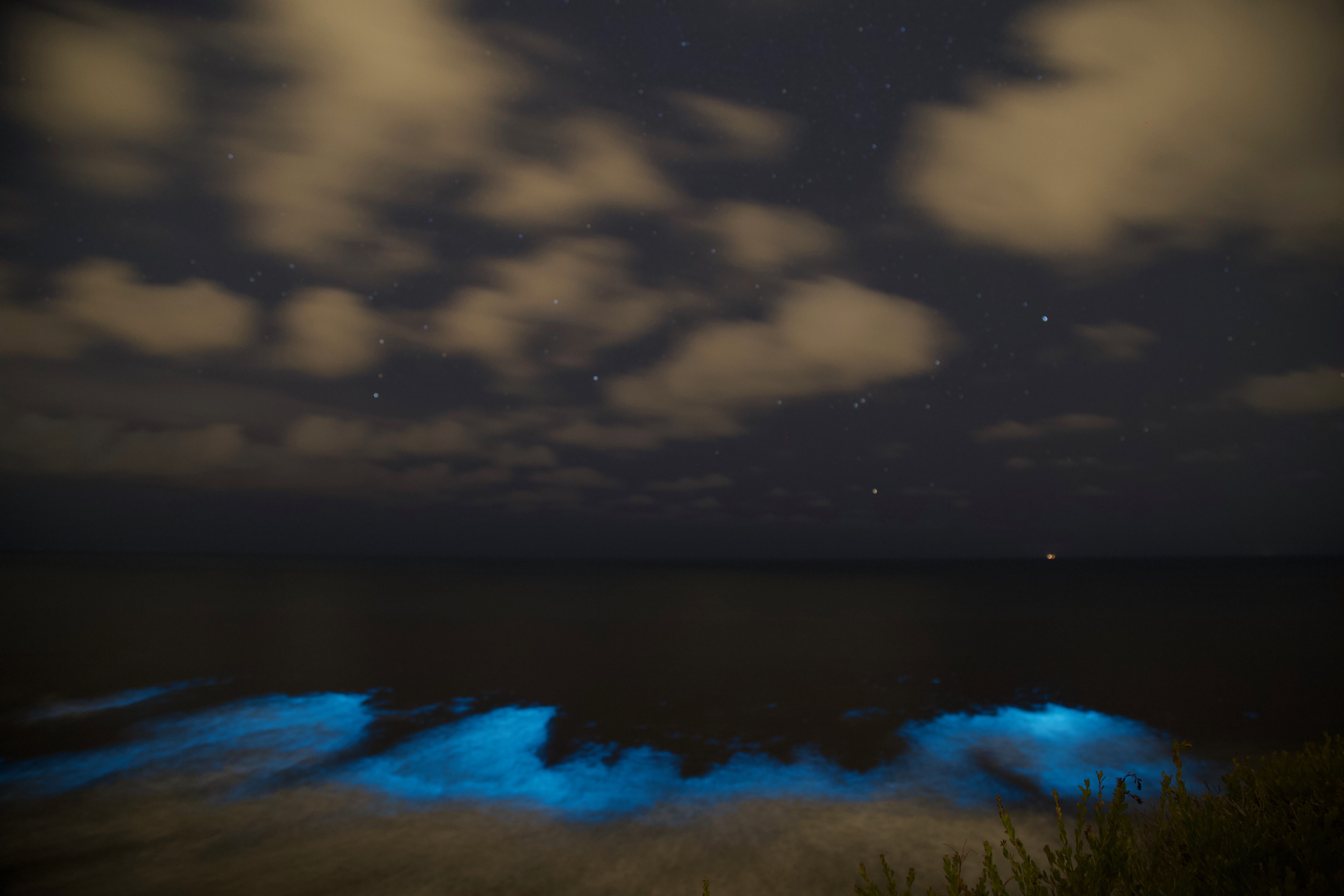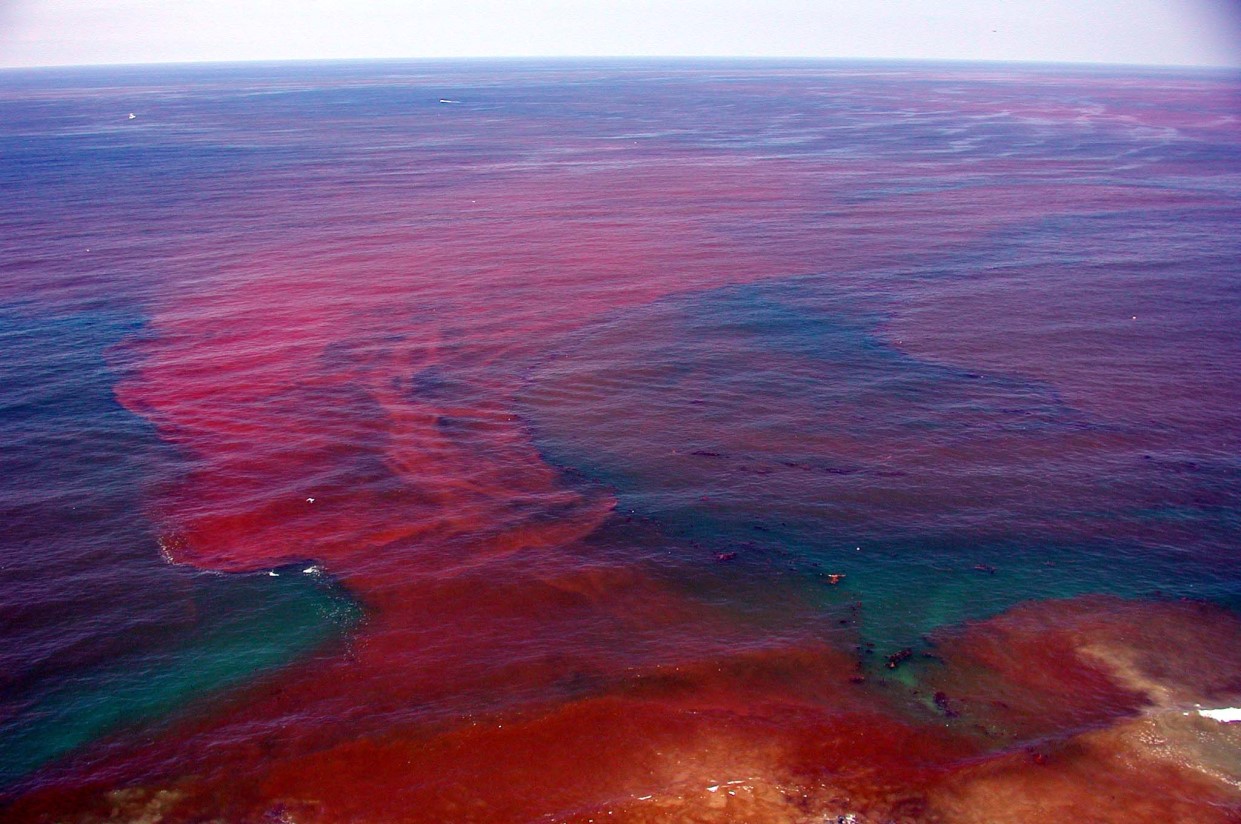
"Glow in the dark" dolphins may seem like something straight out of a science fiction movie. However, that is precisely what Newport Coastal Adventures' Captain Ryan Lawler and professional videographer Patrick Coyne witnessed on April 22, 2020, when they set out to explore the spectacular neon blue tides that have been lighting up the waters off Southern California's coast since mid-April.
The duo scanned the ocean for hours and was returning to shore when they spotted the "electric" dolphins swimming through the bloom of bioluminescent plankton. The videographer, who had seen the phenomenon only once before in a Netflix show, says capturing the footage proved to be a lot harder than he had anticipated. "For starters, the bioluminescence has sweet spots to where it shows up and then fades away, so while on the water, it's impossible to just find it," Coyne says. "[Also], conditions have to be absolutely perfect for the bioluminescence to show and for animals to swim through it so we can film it."
Though witnessing glowing marine life is rare, the electrifying blue ocean streaks are a fairly common sight around Southern California between February and September. The phenomenon can be attributed to the presence of millions of phytoplankton, which tend to gather and reproduce in large quantities in the warm coastal waters during this time.
The single-celled animals illuminate when provoked by sudden movements, such as large waves or predators. The short bursts of neon blue luminescence, caused by the release of a chemical known as luciferase, are a defense mechanism to scare predators away. Experts believed they also act as a "burglar alarm" to attract the attention of a secondary predator that could potentially eat the primary predator. The luminescence, which can be best observed a couple of hours after sunset on a sunny day, ceases once the chemical has been oxidized, causing the microorganisms to go dark until they have a chance to recharge in the sunlight the following day.

The abundance of the tiny microorganisms also causes the ocean waters to appear a murky red, or brown, during the day. Popularly referred to as "red tides," the color is the result of the reddish-hue emitted by phytoplankton's cell pigments, which capture sunlight needed for cell nourishment, growth, and reproduction.
Though a majority of California's red tides are caused by phytoplankton species that do not produce deadly toxins, some algal blooms can be dangerous for marine animals, especially when they linger for long periods of time. In 2018, an almost year-long "red tide" along Florida's Gulf coast caused by the excessive growth of microalgae Karenia Brevis, killed hundreds of fish and other marine animals. The single-celled animals, commonly found in the Gulf of Mexico, release a toxic chemical called brevetoxin, which attacks the nervous systems of animals with often fatal results.
Resources: scripps.ucsd.edu, caseagrant.ucsd.edu, www.sciencealert.com
